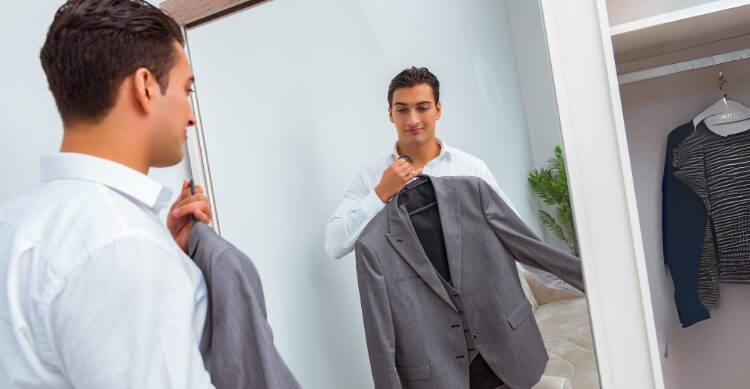Attending a scientific conference is like entering a battleground where intellect and knowledge are the weapons of choice. Just like soldiers equip themselves with the best gear to face their enemies, scientists need to dress appropriately to make a good impression and feel confident.
However, navigating the dress code for scientific conferences can be challenging, depending on the event’s formality and location. For instance, a conference held in a tropical location may require different attire than one held in a colder climate.
The dress code for scientific conferences varies depending on the event’s formality and location. Some conferences require business attire, while others allow for casual dressing. The dress code can also depend on the conference’s theme, as some events may require attendees to wear attire related to the conference’s subject.
In this article, we will explore how to navigate the dress code for scientific conferences and provide tips on how to dress confidently and comfortably.
Key Takeaways
- The dress code for scientific conferences should convey professionalism and respect for the event.
- Business attire is the most common dress code, with conservative and well-tailored outfits recommended.
- Casual attire conferences still require a polished and professional appearance, with appropriate layering and accessorizing.
- Feeling confident and comfortable at scientific conferences requires a multifaceted approach, including good posture and self-care practices.
Understanding the Dress Code for Scientific Conferences
The dress code for scientific conferences typically requires attendees to dress in appropriate attire that conveys professionalism and respect for the event. This usually means wearing suits or business dresses, considered standard attire for such events.
However, cultural considerations may vary depending on the location and nature of the conference. Participants of international engineering and applied science conferences should be aware of the dress code and research the cultural norms of the country or region where the conference is held.
For example, some countries may dress more conservatively, while others dress more casually. Being aware of the cultural context and expectations can help attendees avoid unintentional etiquette breaches.
Dressing Professionally for Business Attire Conferences
When attending a professional conference like a medical conference, appearing polished and put-together is crucial to making a positive impression on colleagues and potential collaborators, just as a well-crafted experiment requires attention to detail and precision.
Business attire is the most common dress code for scientific conferences, and dress appropriately to convey professionalism and competence. Here are some tips for dressing professionally at a conference:
- Choose a conservative outfit that fits well and is tailored appropriately. Avoid anything too tight, too revealing, or too flashy.
- Wear comfortable shoes that are appropriate for the occasion. Avoid anything too high or too trendy that may distract from your appearance.
- Accessorize appropriately with minimal jewelry that is not too flashy or distracting.
- Be mindful of cultural considerations, as different cultures may have different expectations for dress and appearance.
Progressing Casual Attire Conferences
Progressing through a casual dress code can be challenging for professionals attending conferences, but maintain a polished and professional appearance. Remember that comfort and practicality should not sacrifice style and professionalism when attending a conference with a casual dress code.
For example, stylish footwear can be a great way to uplift a casual outfit. Opt for comfortable yet stylish boots, loafers, or sneakers that can be worn with dress pants or skirts.
Another key factor in maneuvering a casual dress code at conferences is layering options. This allows for versatility and adaptability to different weather conditions and settings.
A lightweight blazer or cardigan can be easily dressed up or down, providing warmth if the conference hall is chilly. A scarf or statement necklace can add color and personality to a basic outfit.
Accessorizing for a Polished Look
Enhancing a professional appearance can be achieved through strategic accessorizing, as research shows that 64% of professionals believe that accessories are important in making a good impression in the workplace.
When attending a scientific conference, choose appropriate jewelry and style with scarves to complement your outfit without being too distracting or overwhelming.
For example, a simple pair of stud earrings or a delicate necklace can add a touch of elegance to a professional outfit, while a statement necklace or bold bracelet may be too distracting.
In addition to jewelry, scarves can be an excellent accessory for an outfit. A silk scarf with a subtle pattern can add a pop of colour and sophistication to a plain blazer or dress, while a thicker scarf can provide warmth and texture to a colder climate.
When choosing a scarf, consider the material and the pattern to ensure it complements the outfit and does not clash with other accessories. You can achieve a polished and professional appearance at a scientific conference by carefully selecting accessories and incorporating them into your outfit.
Tips for Feeling Confident and Comfortable at Scientific Conferences
Achieving comfort and confidence at scientific conferences involves more than appearance and requires a multifaceted approach. While it is crucial to dress professionally and appropriately, it is equally important to feel comfortable in what you are wearing.
One way to achieve this is by mixing patterns and incorporating statement pieces into your outfit. This can help add a personal touch to your attire and make you feel more confident and unique.
Another way to feel comfortable and confident at scientific conferences is by focusing on your body language and demeanour. Try to maintain good posture and make eye contact with others when speaking. This can help convey confidence and professionalism.
Additionally, take breaks and rest when needed to avoid feeling overwhelmed or anxious. Overall, feeling confident and comfortable at scientific conferences requires a combination of factors, including attire, body language, and self-care practices.
Final Notes
Dressing appropriately for a scientific conference is crucial for making a positive impression and presenting oneself as a professional in their field.
Although some may argue that dressing up for a conference is superficial and irrelevant to the presented content, you should consider how one’s appearance can impact their interactions with colleagues and potential employers.
By dressing professionally and accessorizing appropriately, individuals can feel confident and comfortable while making valuable connections in their field.







